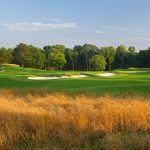You may remember that at the end of last summer I worked with my nephew Lucas to rip out my entire wildlife garden because too many invasive plants had taken over.
I had to make some choices about what plants could stay, and which ones had to go. In some cases, the invasive plants were smothering everything, so entire areas had to be wiped clean.
And then I sat down to make a plan for what wildlife I wanted to focus on in this small city garden. Since I don’t have a lot of space, I’m going to focus on butterflies and plant lots of host plants and nectar plants to support as many butterflies as I can.
Earlier this month we spent several days pulling out more invasive plants and setting up the salvaged wrought iron fence to divide the yard into two areas: one for my wildlife garden, and the other part for my Plott Hounds.
Here are some tips for planting a small city wildlife garden:
Plan your garden: Consider the available light, soil type, and other environmental factors when choosing plants and laying out your garden. Make sure to include a variety of flowers, shrubs, and trees that will provide food and shelter for wildlife.
Use native plants: Native plants are well-adapted to your local climate and provide food and habitat for local wildlife.
Provide food and shelter: Include a variety of flowering plants, shrubs, and trees that will provide food for pollinators, as well as bird and butterfly feeders, birdhouses, and nesting sites.
Incorporate water features: Install a bird bath or small pond to provide water for wildlife.
Minimize the use of pesticides and herbicides: Pesticides and herbicides can harm wildlife and disrupt the delicate balance of your garden ecosystem.
Provide vertical space: Use trellises, fences, and walls to create vertical space for climbing plants and nesting sites for birds.
Incorporate diverse habitats: Include different types of habitats, such as areas of tall grass, shrubs, and bare ground, to provide a range of microhabitats for different species of wildlife.
Be patient: Wildlife gardens often take time to establish and attract wildlife, so be patient and enjoy the process of watching your garden grow and evolve.
More From Ecosystem Gardening:
Submit your review | |








